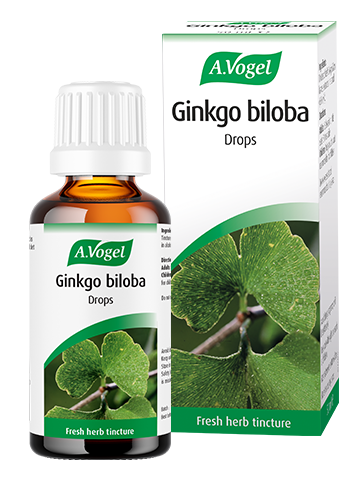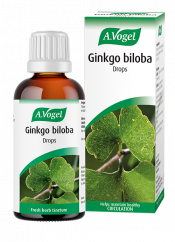Why do I get heavy legs when travelling?
Although the symptoms of heavy legs and swollen ankles are usually associated with long-haul flights, given the right conditions, the same symptoms can develop in a car, bus, boat or even on your comfy sofa at home. Sitting for long periods at a time, cramping your legs, or not moving them, all encourages poor circulation, allowing blood and fluid to build up in your legs and ankles. The result – at best, pain, swelling, stiffness and quite probably, varicose veins. Charming.
So if you are planning to embark on a long-haul flight, or are making a long journey by some other means of transport, follow these 10 tips to ensure your holiday adventures are not marred by legs which feel like lead…

How can I get rid of heavy legs when flying?
1. Twiddle your toes – keeping your feet and ankles moving while sitting for long periods will encourage regular blood flow. Part of the problem of sitting for a long time is that gravity encourages blood to pool in your feet and ankles. Without fresh blood being delivered to your legs, they become swollen and painful. Moving your feet and legs about prevents the blood from collecting in this way.
Try rotating your ankles one way, and then the other, and also perform a heel-to-toe ‘seesaw.’ At least every hour, or when your legs are feeling slightly heavy, raise your toes off the ground and spread them. Hold this for a few seconds, then relax your toes, lower them again and clench them for a few seconds. Continue this routine at least ten times.
2. Keep cool – many people notice a slight swelling in their fingers and toes after intense exercise or in hot weather. The same scenario can be replicated in an aeroplane. When you are too hot, your veins dilate. Additionally, you are prone to sweat more, losing salt through the skin. This makes your veins less efficient at drawing blood from surrounding tissues, allowing blood and other fluid to gather in your legs.
Keep the air-conditioning above your head on, and if necessary bring along a hand held fan. If nothing else, this could provide a talking point for you and your neighbour.
3. Watch your position – we know that long haul flights can be boring and uncomfortable. However, trying to ease your discomfort by crossing your legs, slouching or curling up in your seat is not always the best plan. This has the same effect as wearing tight clothing. Blood flow is restricted, encouraging fluid to build up in your legs, rather than circulate towards your heart.

4. Be fashion conscious – did you not know that the trendiest outfit on an aeroplane is cool loose-fitting clothing, flat shoes, and in some cases pressure stockings. Why? Because not only will you get through security more quickly that your high-heeled and belt-clad companions, but your legs will be the envy of the flight crew and passengers as you stride away from the aeroplane at your destination. Loose fitting clothes do not restrict blood circulation.
Compression stockings have been devised so that pressure is greatest around your feet and ankles, and lessens as it travels up your leg. This encourages blood flow towards your heart. Although flight socks are not necessary for everyone, if you are prone to developing heavy legs when travelling, or suffer from varicose veins, it is worth giving them a try.
5. Have a drink – unfortunately not of the alcoholic or caffeinated variety. Drinking alcohol and caffeine have dehydrating effects and promote toxin build-up in the bloodstream. Keeping hydrated is important for promoting good circulation, as well as encouraging the body to flush out toxins, which could cause pain in the legs. So, keep drinking plenty of water, which leads us onto our next tip…

6. Go for a walk – after all that water, you may find that nature calls. Take the excuse to go for a stroll down the plane, going to the furthest away toilet if possible. You should try to get up and stretch your legs at least once or twice during the flight, even if you don’t have that coveted aisle seat. And remember, even if there aren’t any curtains in the toilet, there isn’t likely to be anyone walking past the window…
What can I do to ease my legs after flying?
1. Keep your feet up – this is also known as static recovery. While you are lying on your bed, watching television or reading a book with your feet elevated above the level of your heart. This position will encourage the blood to flow away from your legs and feet and towards your heart. This will promote a fresh supply of blood around your legs, reducing pain and swelling.

2. Go for a walk – that is, a bit further than off the plane and through the airport terminal. Walking about stimulates blood flow and circulation, helping any fluid which has built up to disperse. Stretching your legs also stretches and strengthens your veins, reducing your chances of developing varicose veins. Go walking regularly for a long-term preventative measure against heavy legs.
3. Have a massage – this is also known as active recovery. With your feet elevated, you can begin to massage your legs, to promote a quicker dispersion of fluid build-up. Make sure you take off your shoes and any restrictive clothing, and rub your feet hard, slowly working up your ankles and legs.

4. Rinse your legs in cold water – washing your feet, ankles and legs thoroughly in cold water strengthens the veins and encourages them to contract, reducing swelling in the legs. If you do this just before you bed down at night, you are more likely to enjoy a pain-free, restful sleep. Zzzz…
What can I use to relieve heavy legs?
Regardless of how much massaging, rotation of ankles and drinking of water takes place, some people are simply more prone to developing heavy legs.This group of people may benefit from taking part in a childhood activity – playing conkers. While the running about involved in this will promote good circulation, you will also be reducing the conkers to a nice mushy pulp, perfect for spreading over heavy legs.
Conkers, the fruit of the Horse Chestnut tree (Aesculus hippocastanum),tighten the membranes of the blood vessels, encouraging better venous circulation.
 Instead of manufacturing the conkers yourself, A.Vogel has devised a gel, made from Aesculus seeds picked at their prime and harvested the same day. This gel, called Venagel, is a soothing alternative to a potentially rather messy concoction. Venagel can be applied regularly throughout the day to help ease symptoms of heavy legs, leaving you free to enjoy the rest of your holiday.
Instead of manufacturing the conkers yourself, A.Vogel has devised a gel, made from Aesculus seeds picked at their prime and harvested the same day. This gel, called Venagel, is a soothing alternative to a potentially rather messy concoction. Venagel can be applied regularly throughout the day to help ease symptoms of heavy legs, leaving you free to enjoy the rest of your holiday.
Originally written on 30/07/2014, updated on 29/11/2018.








